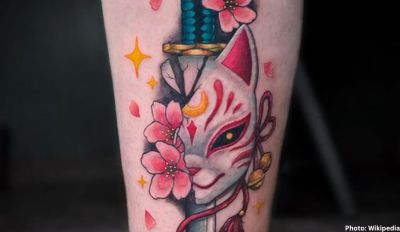Following her father’s passing five years ago, Nirmala Chetty, now professionally known as Dr. Sahila, a medical practitioner based in New Jersey, faced a challenging health journey, grappling with bipolar depression and thyroid issues, among other ailments. Despite seeking relief in various hospitals, she found no solace.
However, delving into her Hindu and Indian heritage, Sahila discovered what she describes as a transformative solution. Today, she proudly asserts being “pill-free, disease-free, and stress-free,” attributing her well-being to the scientific efficacy of chakra healing.
Expressing her lament over the diminished faith in this ancient practice, Sahila, who operates her own clinic named Wellness with Sahila, remarked, “It’s very sad that, you know, such a beautiful and crucial concept is lost today because people don’t have faith in it.”
Critics have often derided chakra healing as pseudoscience, noting its exploitation by self-professed healers who charge exorbitant fees. Common perceptions associate chakras with energy centers in the body, correlated with colors and shapes representing emotions and meanings.
Yet, amidst skepticism, proponents of chakra healing, buoyed by the growing acceptance of Indian-origin practices like yoga in the West, endeavor to dispel misconceptions and assert the scientific grounding of their methods.
Reflecting on this evolution, Maetreyii Ma Nolan, a spiritual instructor in California, elucidated, “As Indian thought has come to the West, it’s gone through various incarnations, first as a spiritual tradition, and then as asana, or yoga posture tradition.”
Chakra healing, an ancient Hindu doctrine, posits that chakras—Sanskrit for “wheels”—align with specific nerve endings and internal organs. The body comprises seven chakras, prominently featuring the “third eye” at the forehead, often adorned with a bindi in Hindu culture.
According to Sahila and fellow practitioners, blockages in these chakras can manifest as emotional, physical, and spiritual maladies. For instance, an imbalance in the muladhara chakra, linked with identity and situated at the base of the spine, may result in depression, anxiety, or narcissism if not rectified. Similarly, issues with the svadhisthana chakra, situated in the lower abdomen and associated with women’s health, can affect childbirth.
Addressing these blockages, Sahila advocates surrendering the ego and embracing a journey of “sadhana”—a daily regimen of yoga and meditation targeting each chakra and its corresponding natural element.
While Western medicine often dismisses chakra healing as alternative or new-age, Sahila contends, “there’s a science to it, and if you understand the science to it, then the flow just automatically happens.”
Offering a testimony to the compatibility of chakra healing and Western medical practices, Hina Mehta, a neuroscience fellow at the National Institute of Health, revealed her initial hesitance as a scientist to explore Eastern healing. However, she emphasized the non-mutually exclusive nature of Hindu philosophy and Western science.
Mehta highlighted the direct correlation between chakras and the body’s hormone-producing glands, asserting that yogis and gurus have long mastered the art of channeling energy to these glands through specific yoga postures and hand movements.
For Lata Nigam, who underwent a significant lifestyle change following a breast cancer diagnosis, chakra healing provided a deeper understanding of her internal struggles. While acknowledging Sahila’s impact on her life, Nigam stressed the importance of personal commitment to the healing process.
Critics attribute the skepticism surrounding chakra healing to Western misinterpretations of Hindu healing concepts. Maetreyii Ma Nolan, blending psychology with Tantric philosophy, leads a community in California dedicated to meditation and self-discovery.
Evan Rofheart, another advocate of chakra healing, dismisses the necessity of subscribing to Hindu doctrines, underscoring personal experiences of divine energy transfer as foundational to his practice.
Nevertheless, proponents like Sahila emphasize the scientific underpinnings of chakra healing, citing correspondences between the seven chakras and cosmic and human realities. Sahila’s personal experiences with chakra healing, particularly the opening of her throat chakra, have reinforced her belief in its efficacy.
Sahila posits that widespread recognition of the authentic science behind chakra healing could significantly benefit society, fostering profound personal growth and well-being.











